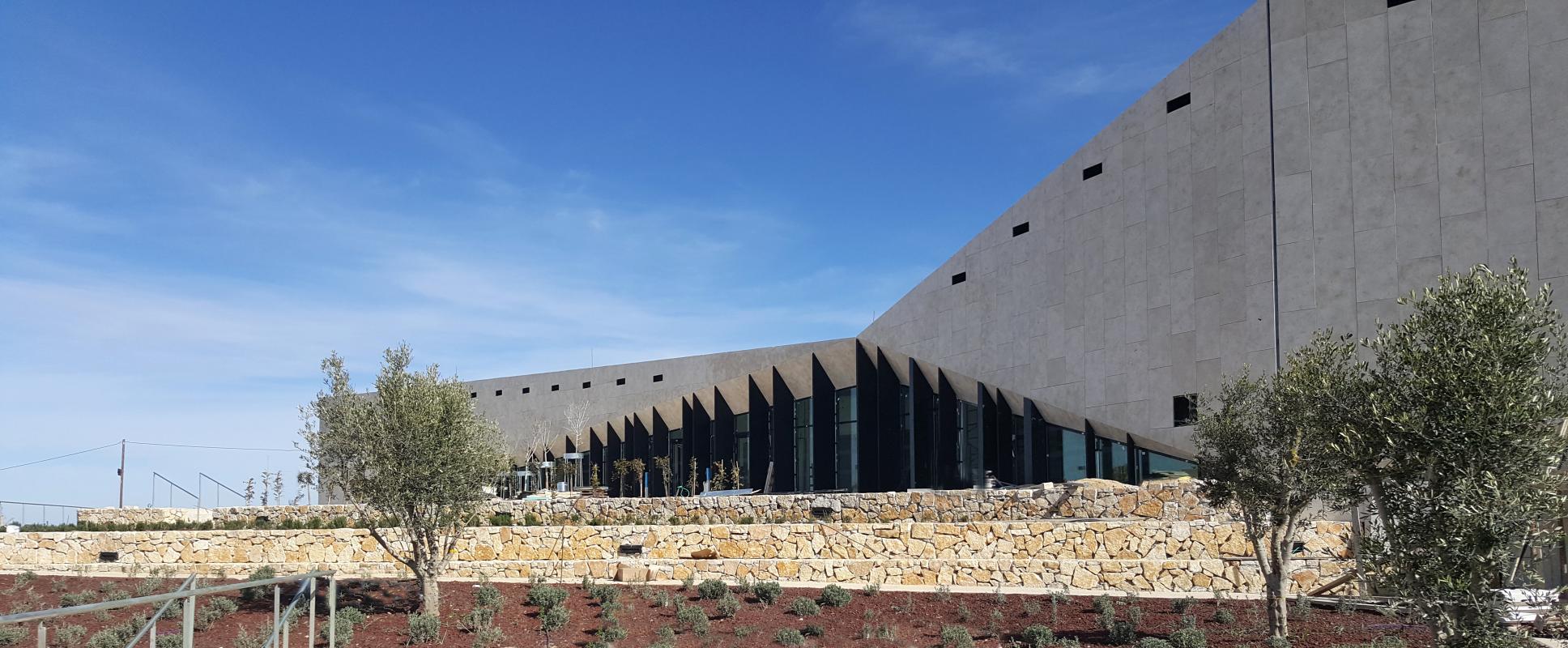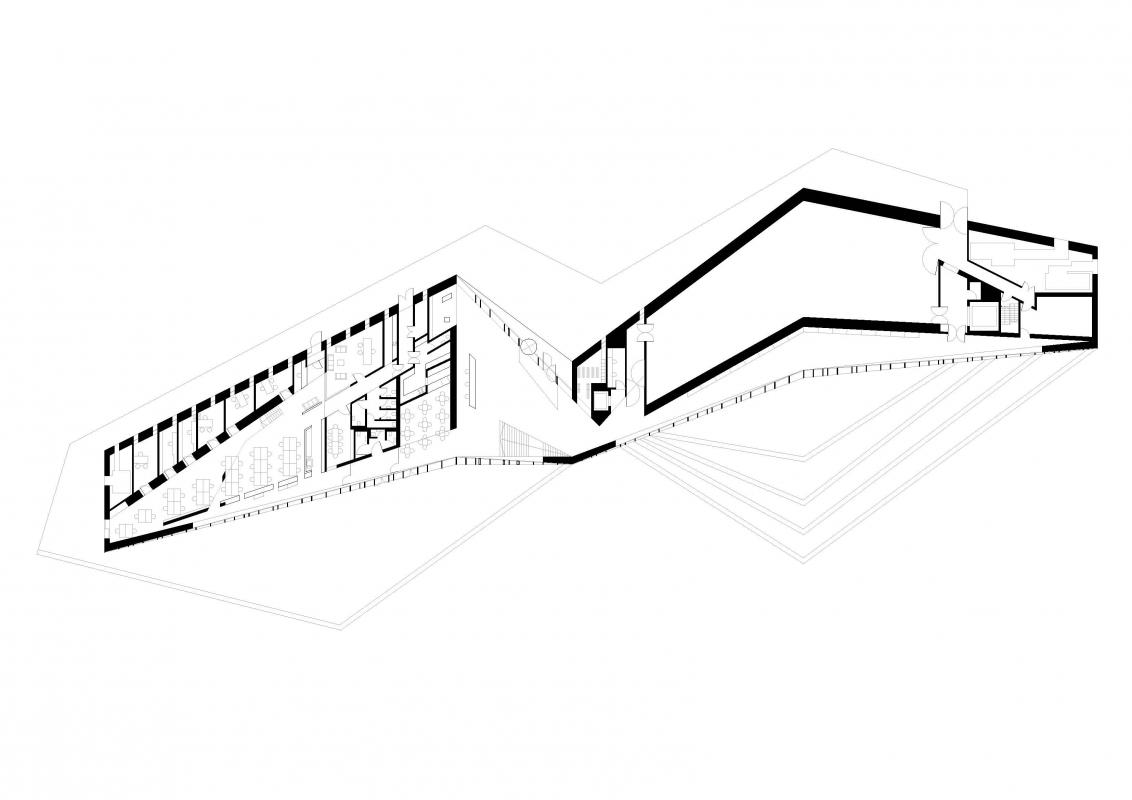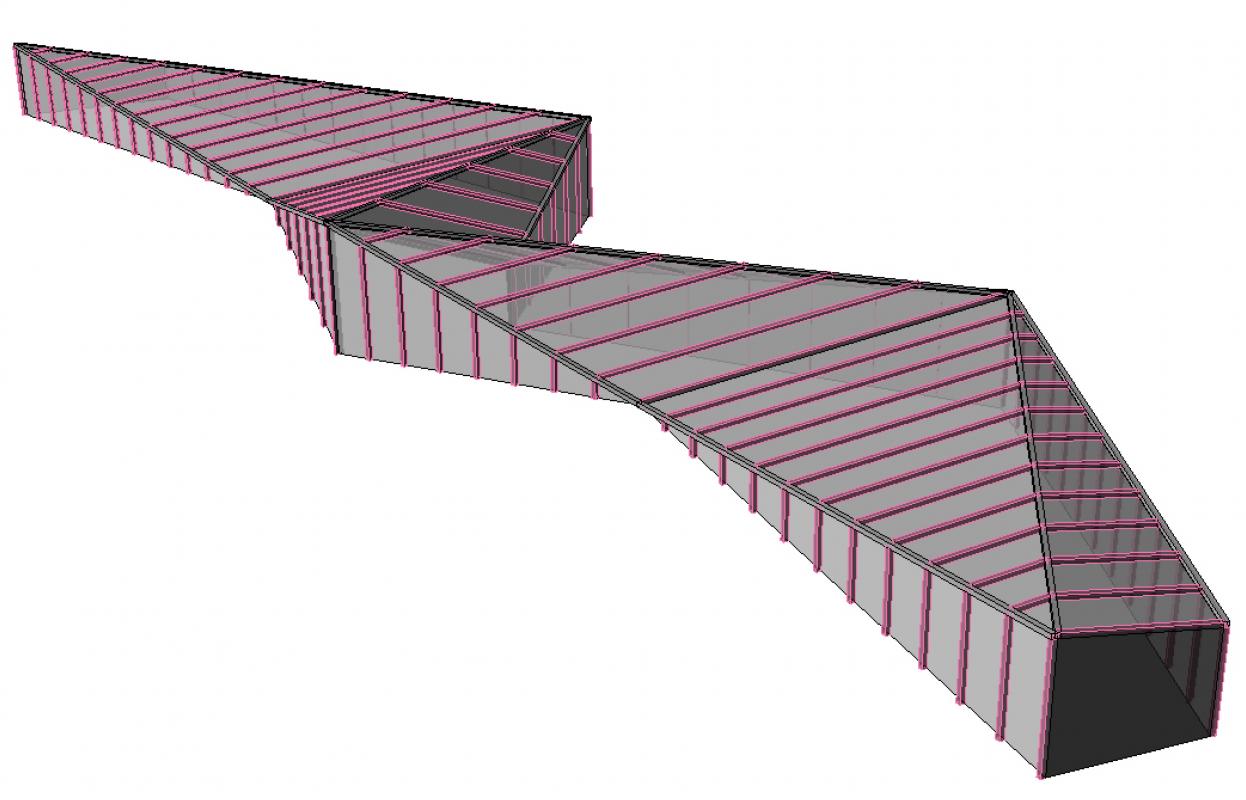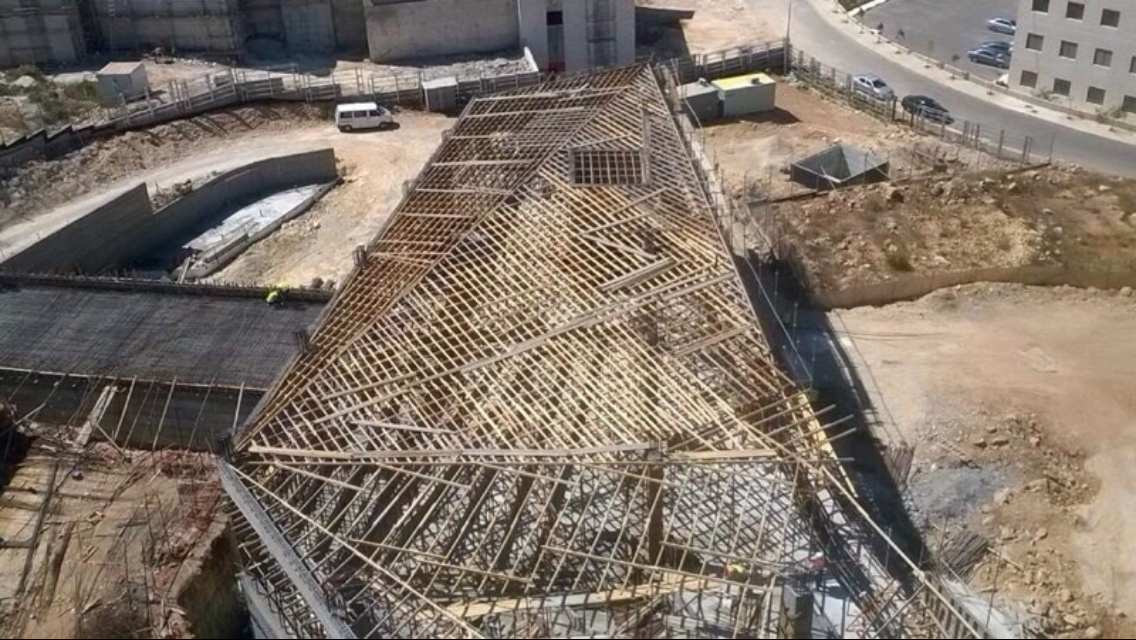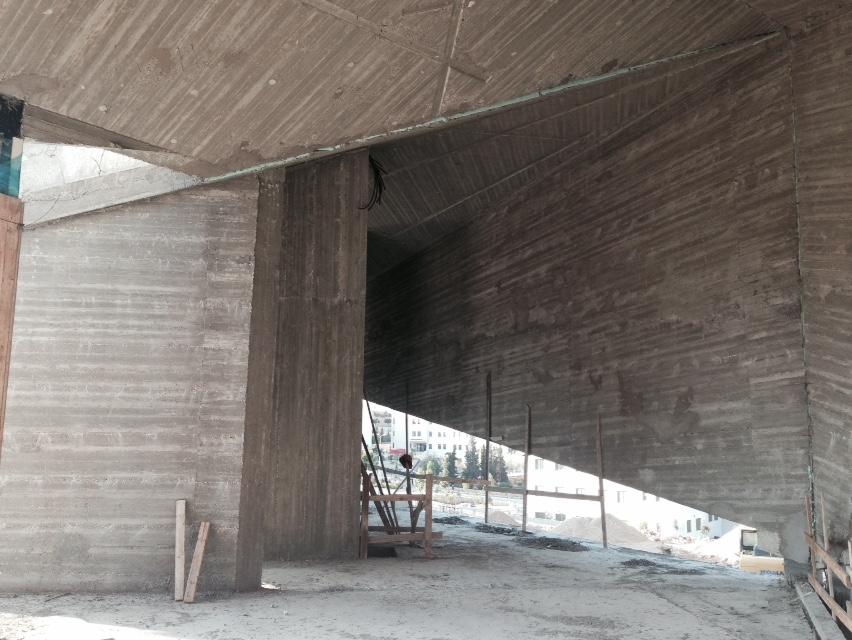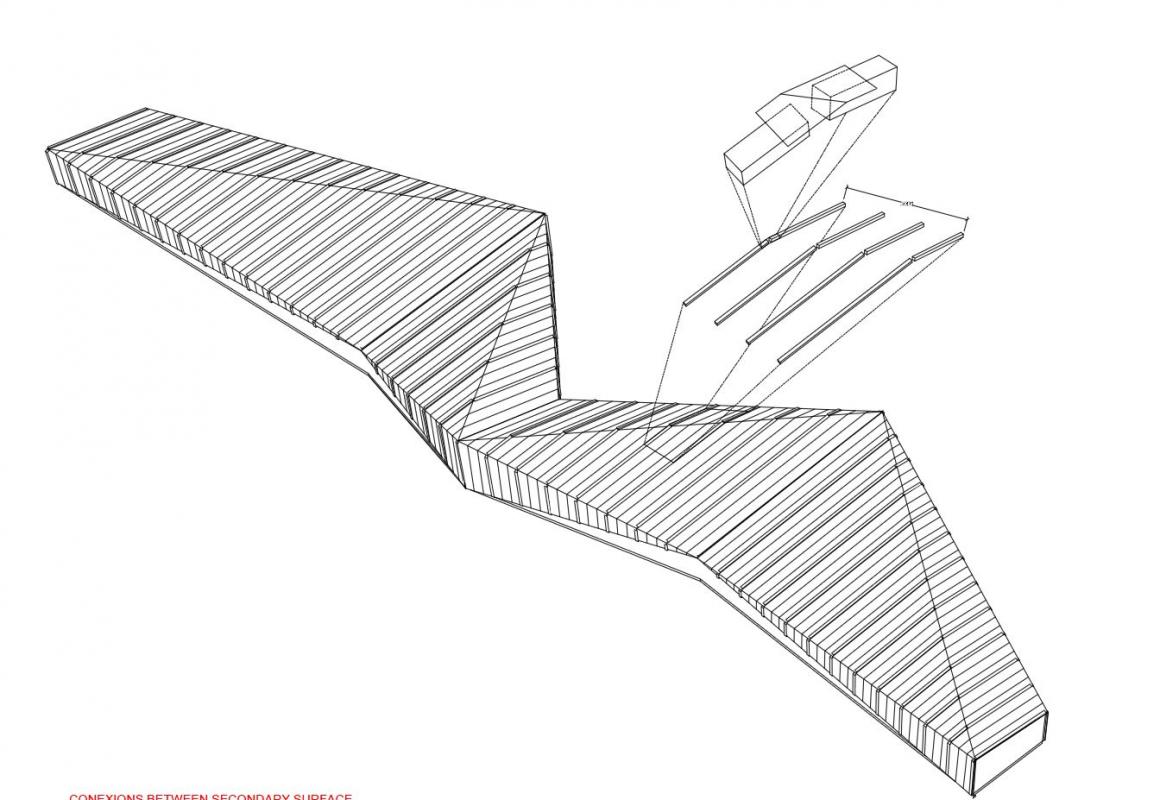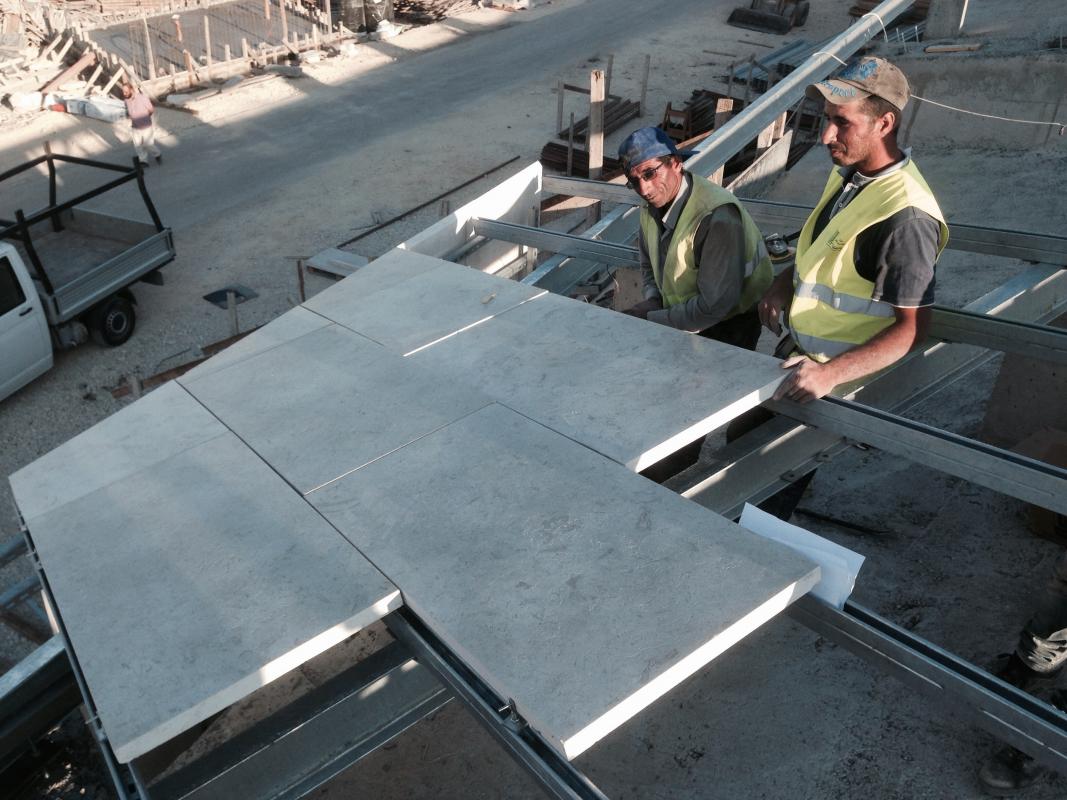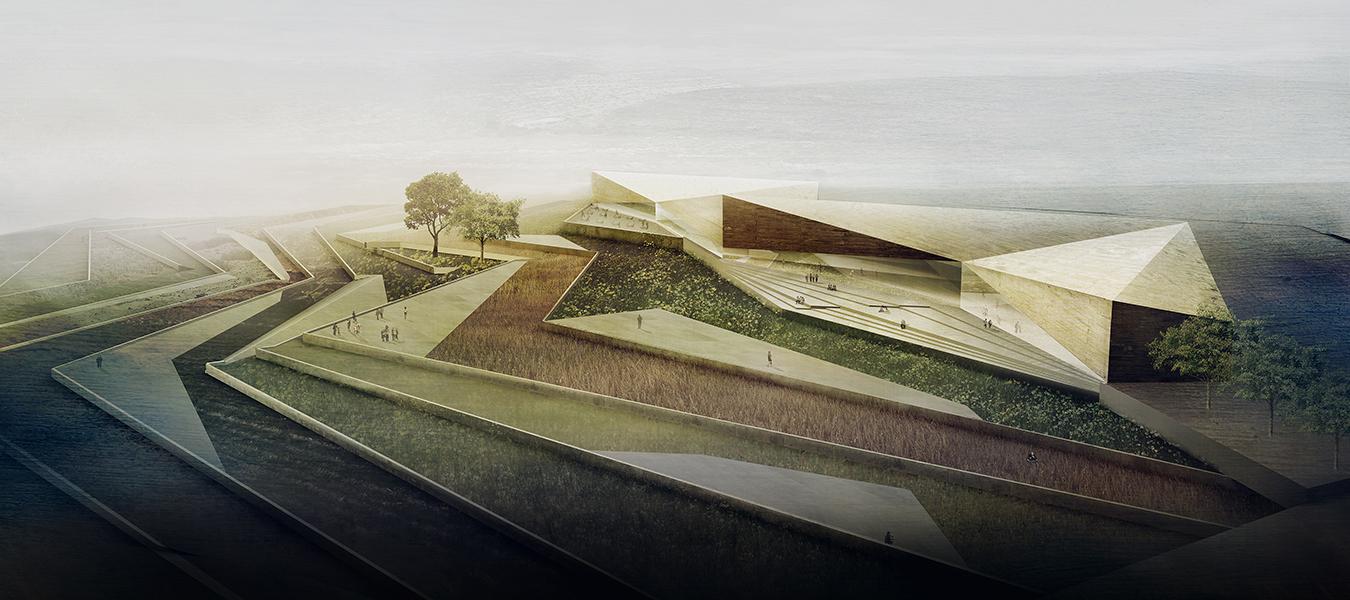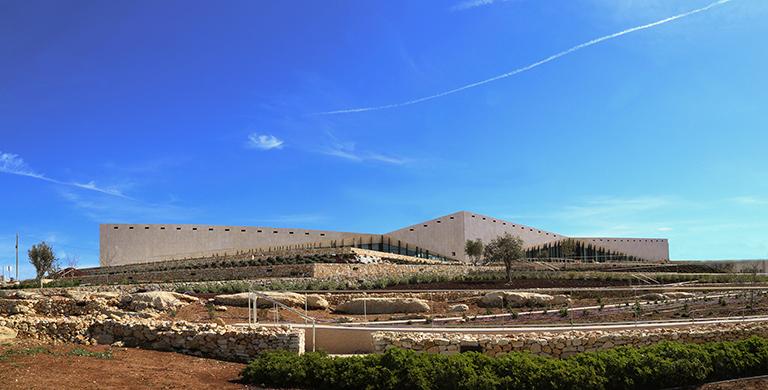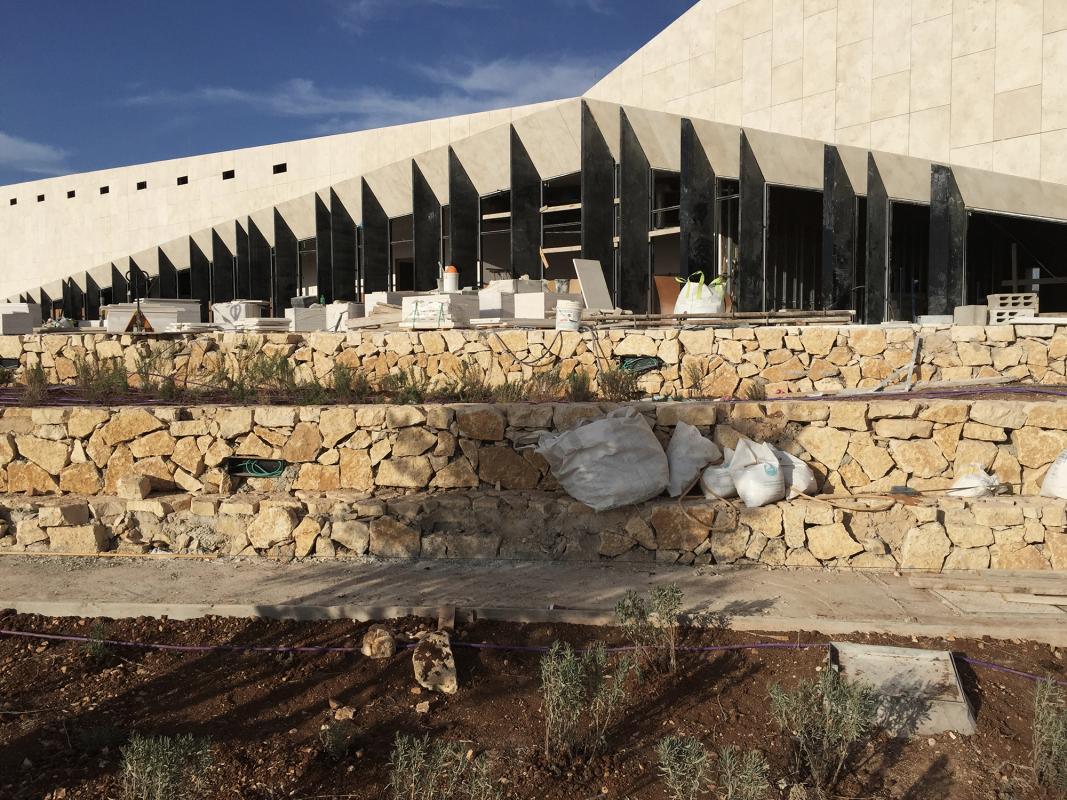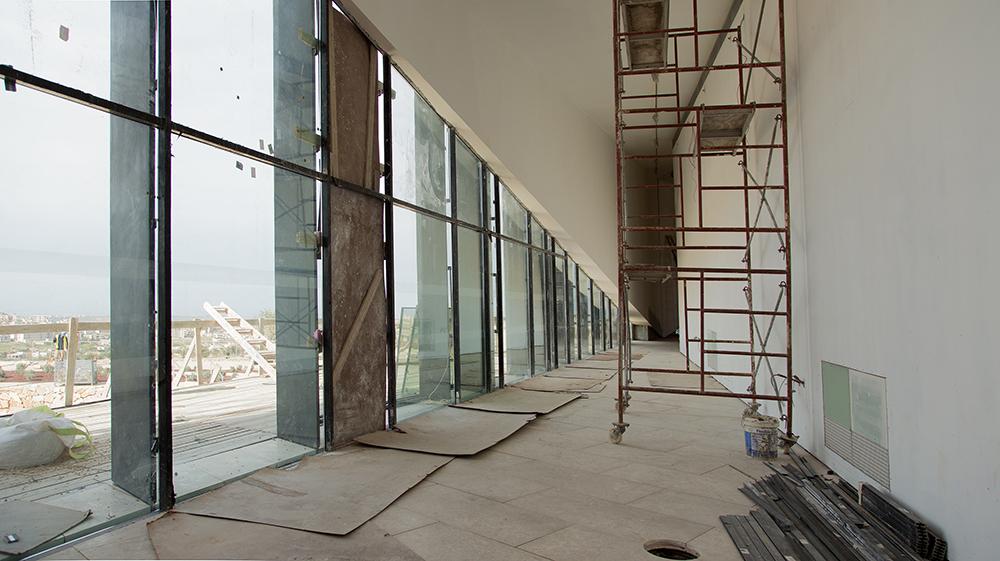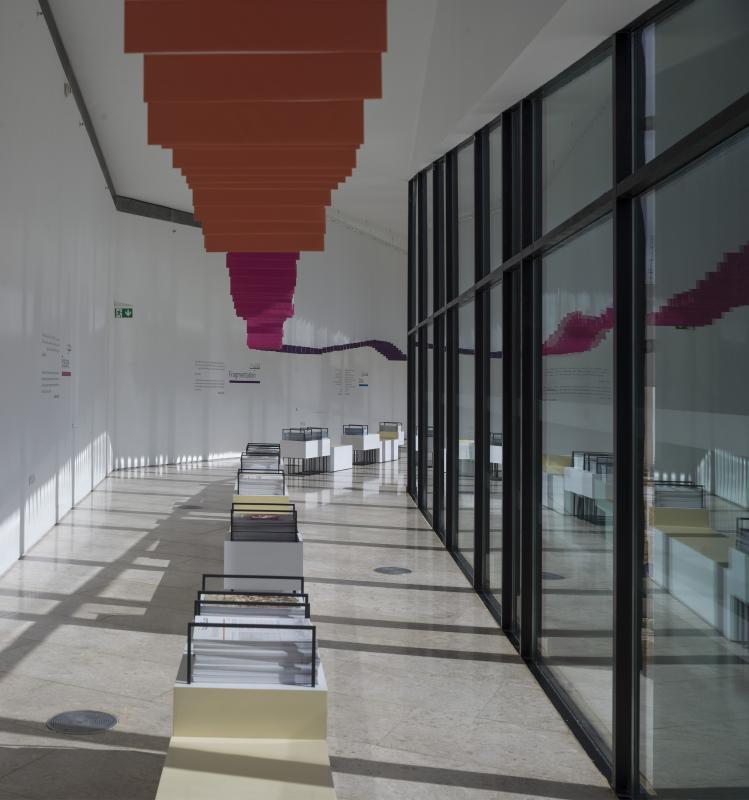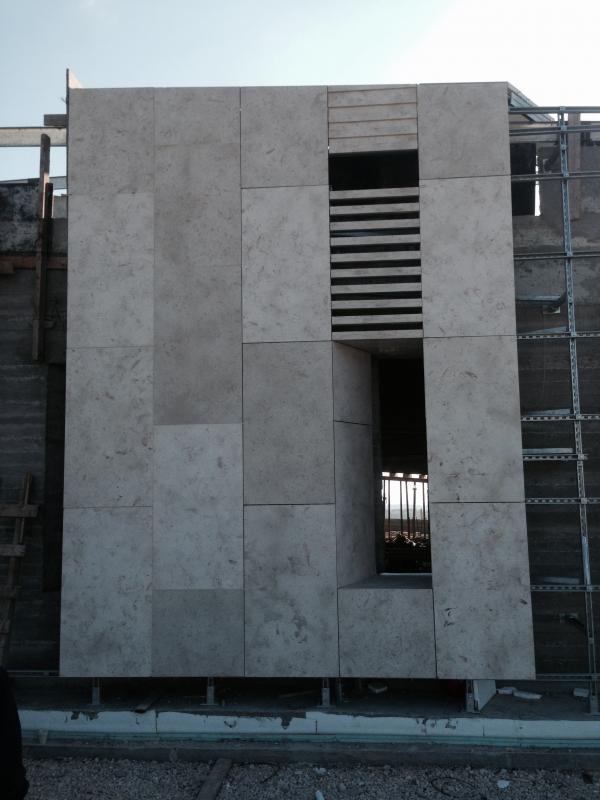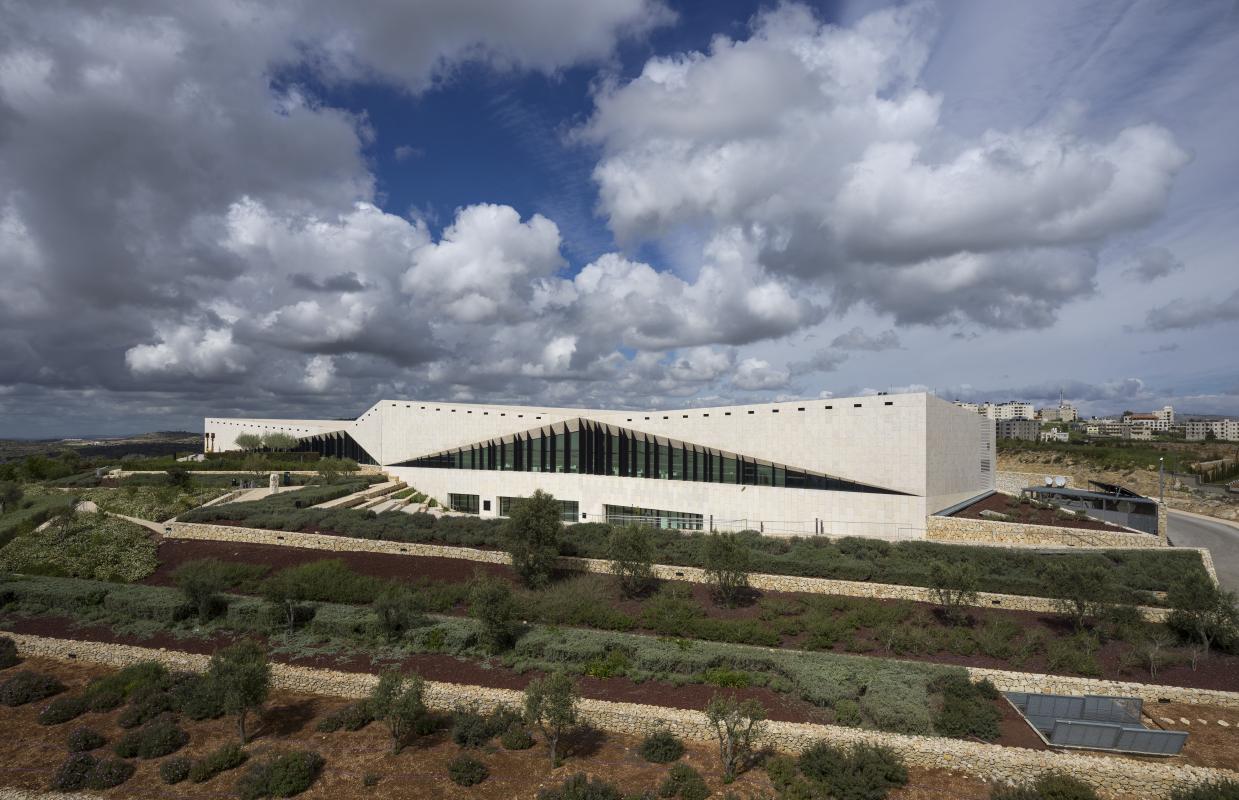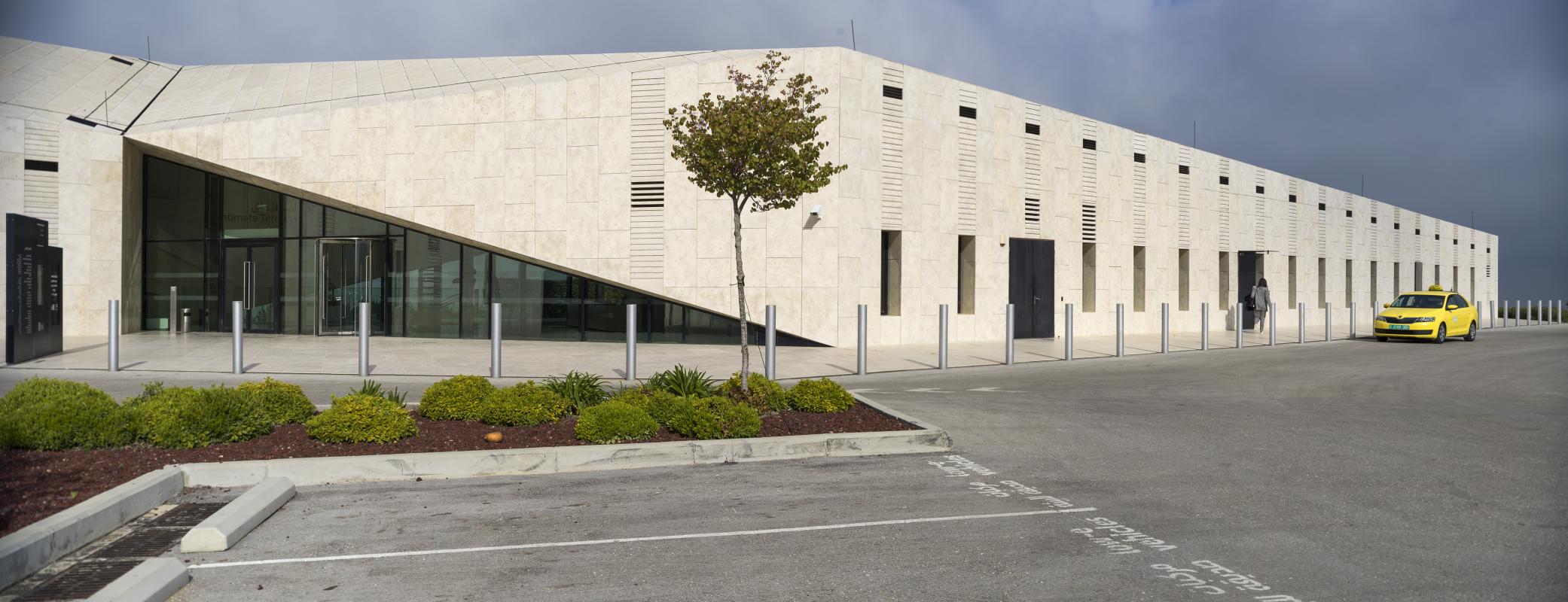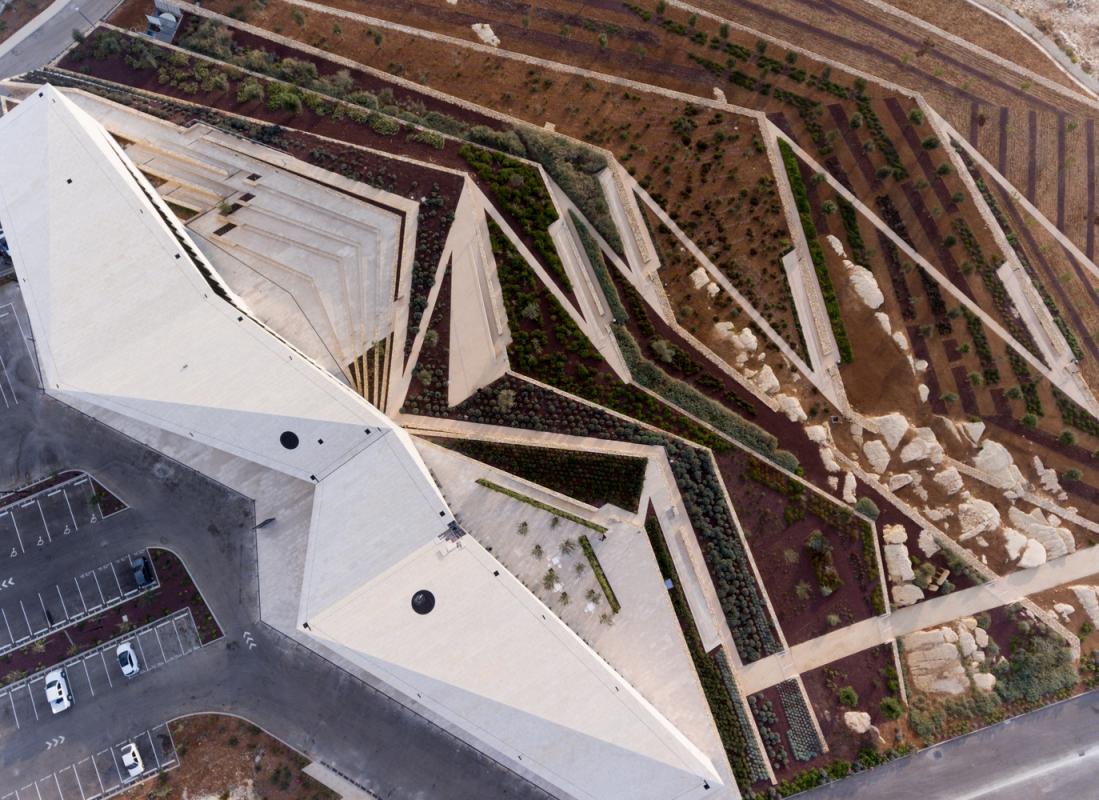Palestinian Museum
Construction of Palestinian Museum in Bir Zeit, Cisjordania
The Palestinian Museum is a relatively small building which contains administration, archive, exhibition and performance spaces for an institution whose vision is to communicate the rich culture of the Palestinian people. The architects Heneghan Peng won an invited design competition for the building. T/E/S/S was appointed as a consultant for technical studies of the building envelope; comprising stone cladding, glazed facades and solar control.
The hilltop site in Birzeit, 30km of Jerusalem, slopes from east to west; commanding sweeping views across the Palestinian landscape. The site is formed and re-organised by a series of cascading terraced gardens, created by making stone retaining walls which trace the agricultural terraces of the area. The building itself is derived from these new site lines and emerges from this landscape as a monolithic form; clad entirely in stone. This stone is quarried locally in Bethlehem, and wraps up and over the building; covering all walls and sloping roofs. The large stone sheets are pinned to a series of cladding rails, a system which is appropriate for the seismic loading of the region. All stone joints are left open.>
On the roof, the cladding railing spans on to steel purlins which are supported off concrete upstand beams. The choice of upstand beams not only allow the steel purlins and their anchorages to be held up above the water levels, but they also allow the impressive smooth concrete soffit to the museums interiors to be entirely free of down-stand beams.


